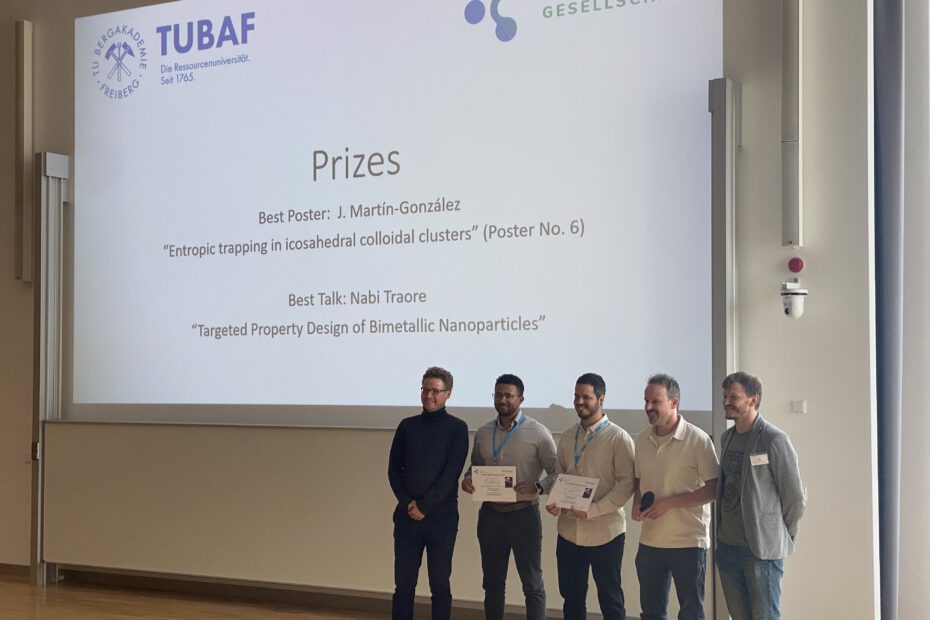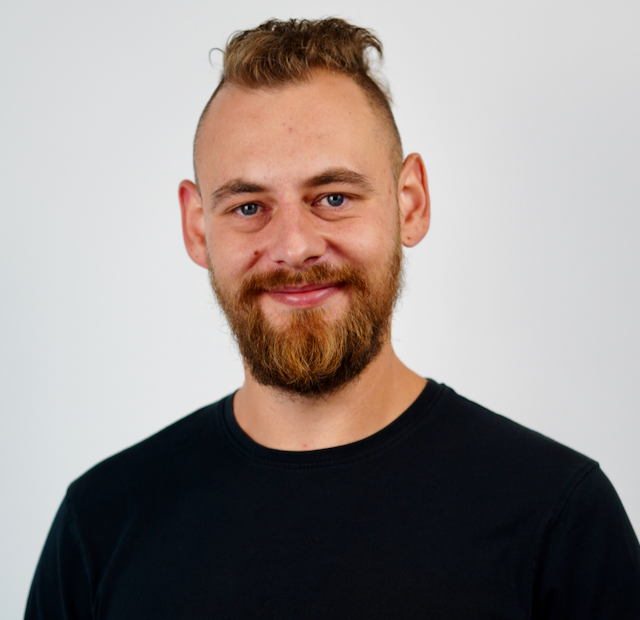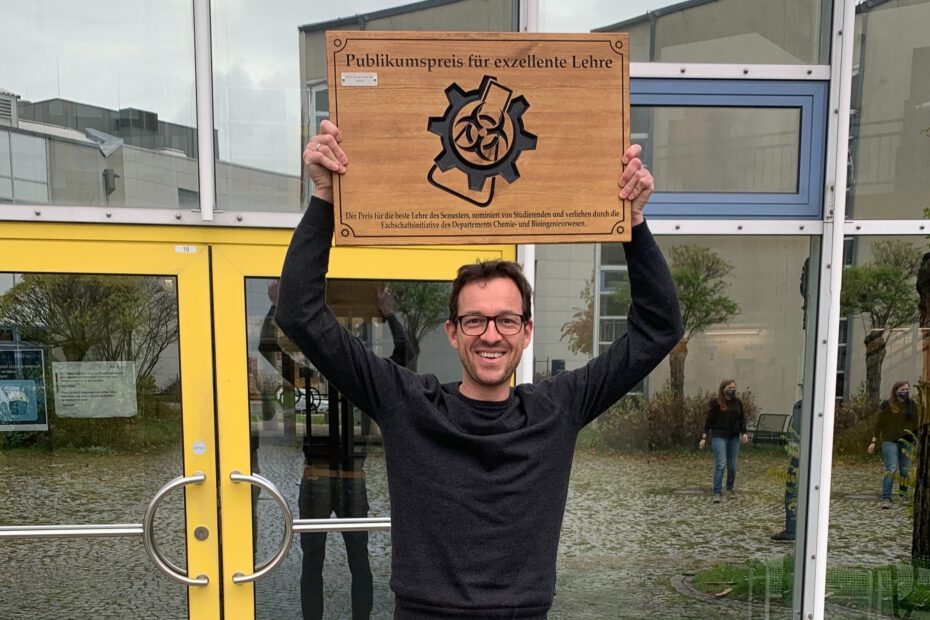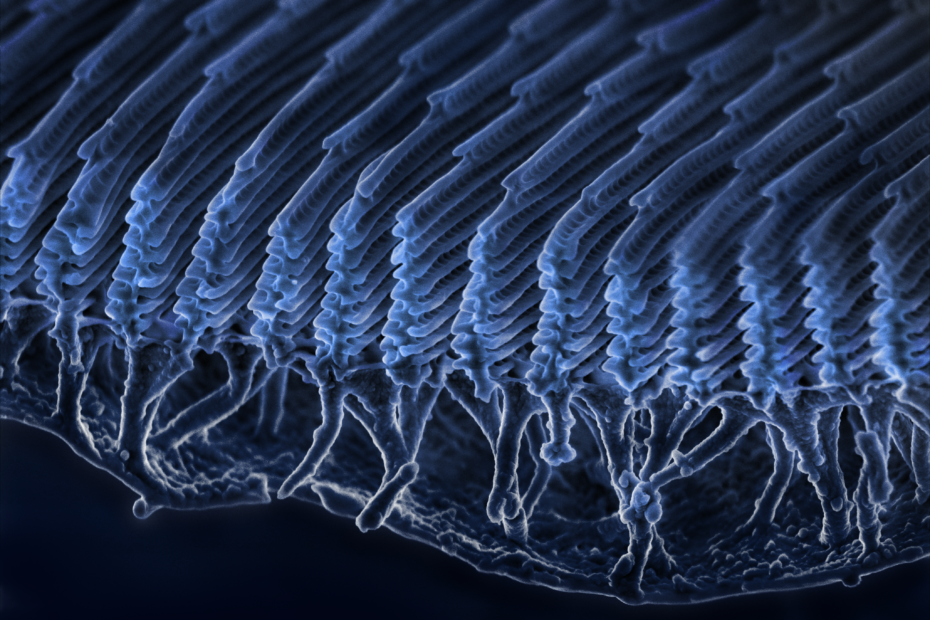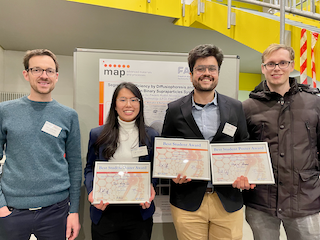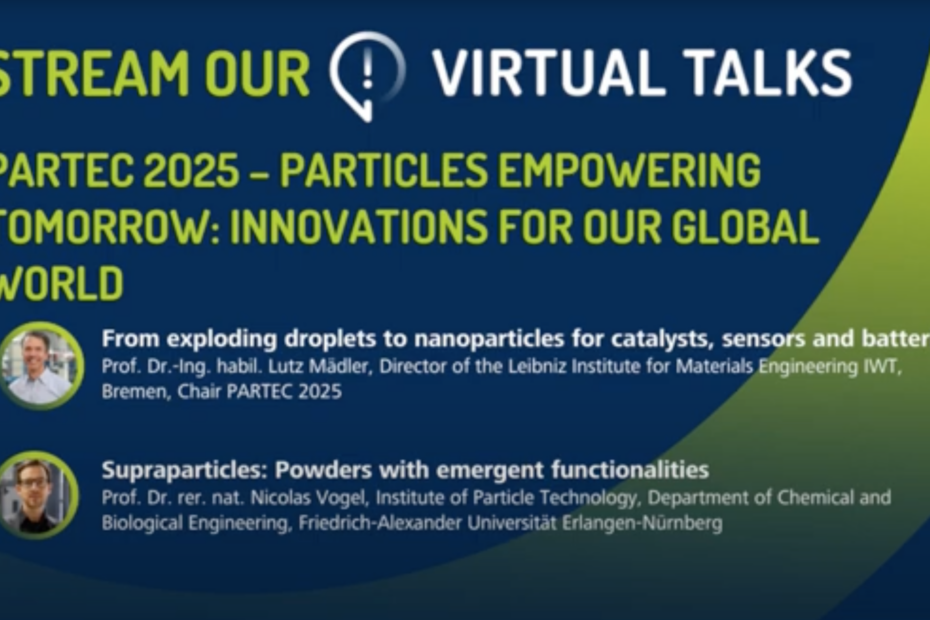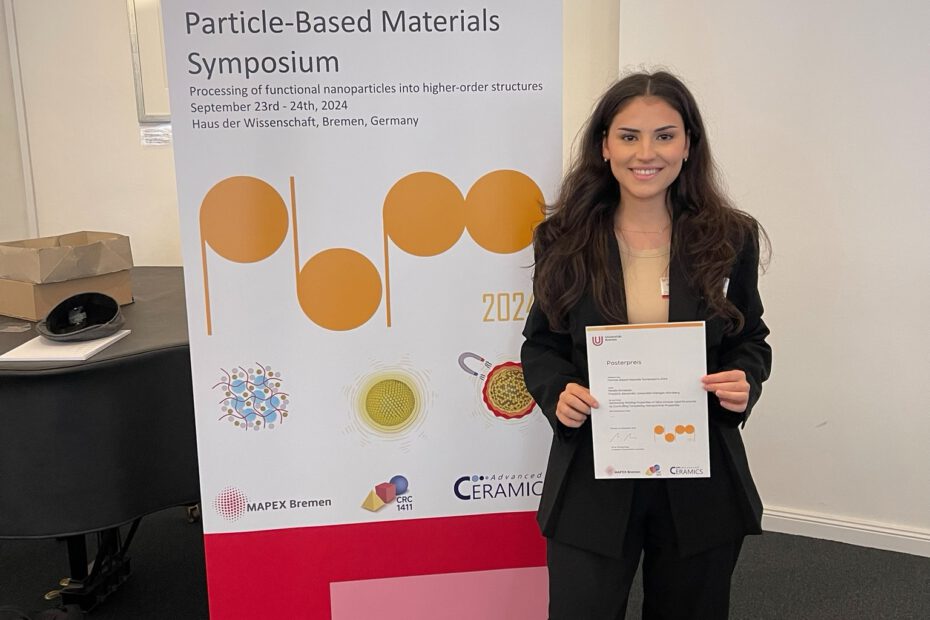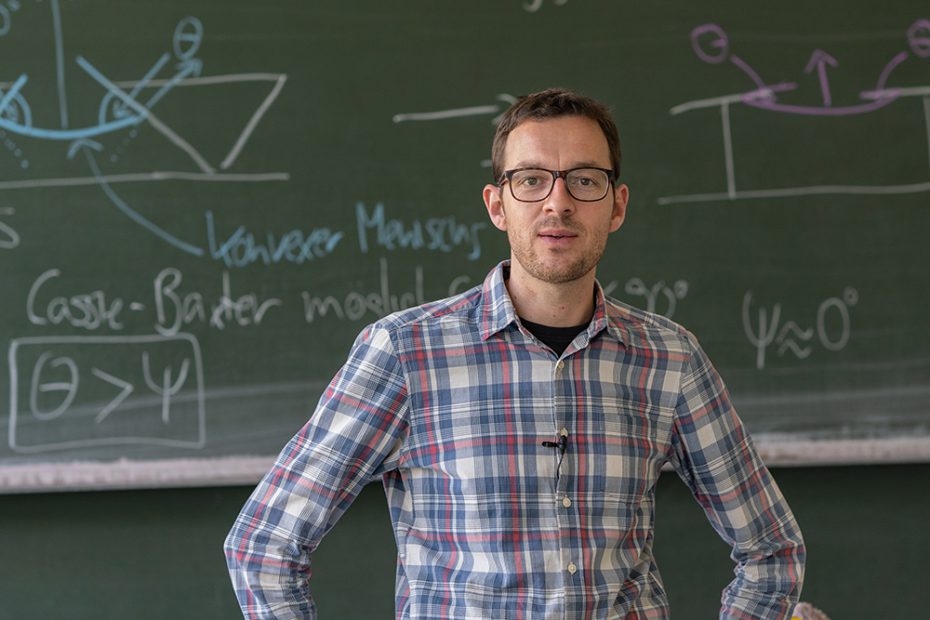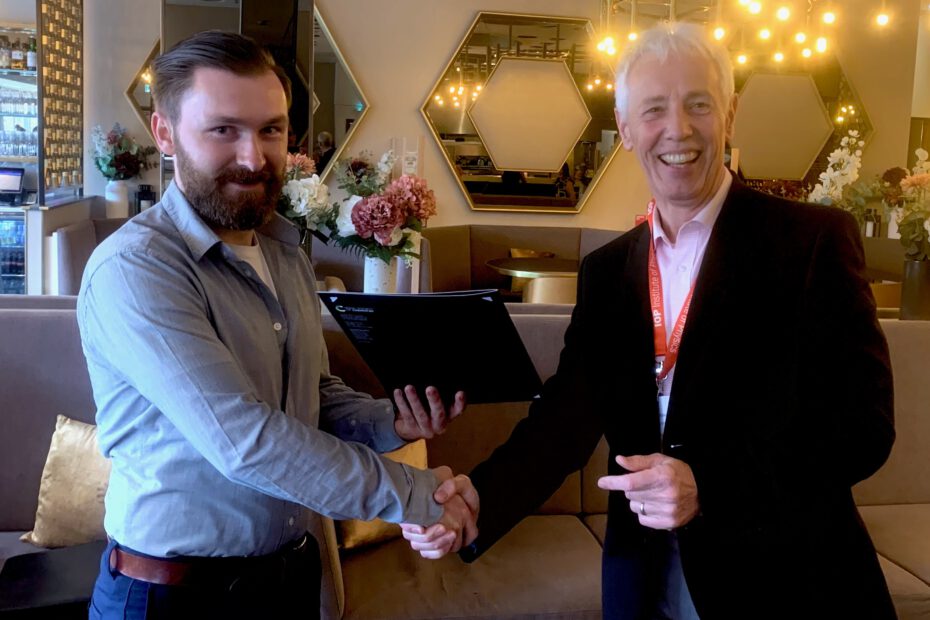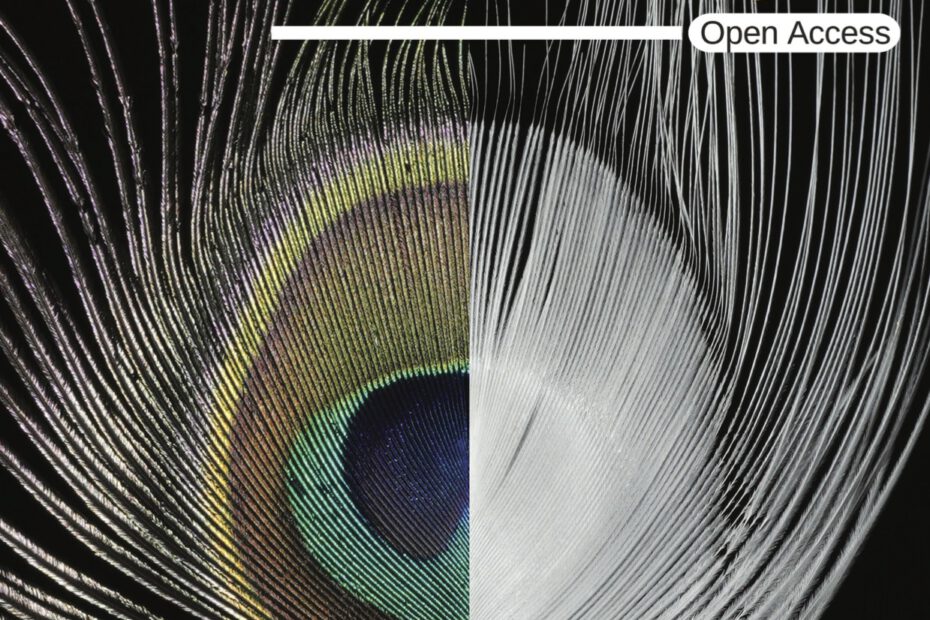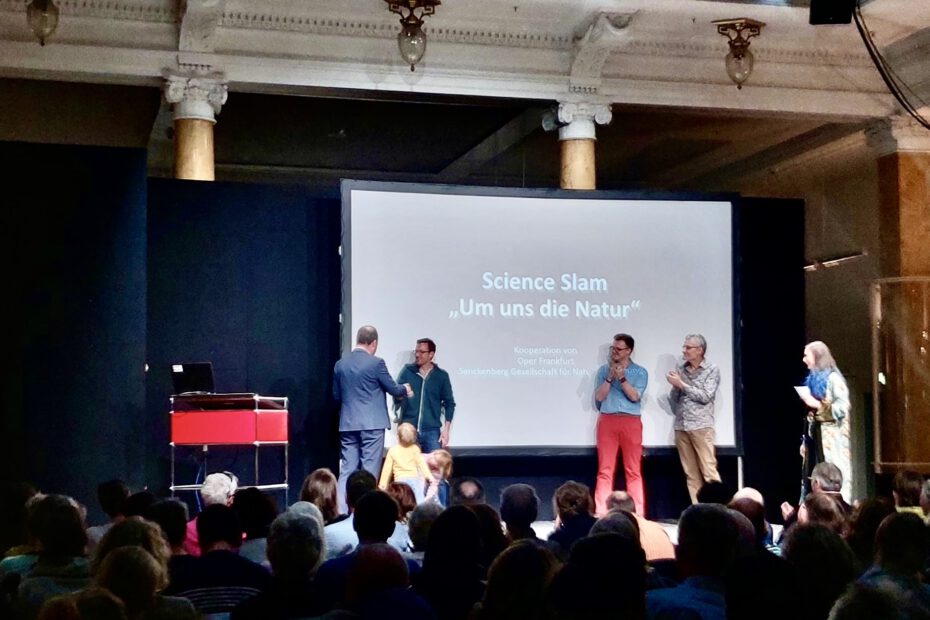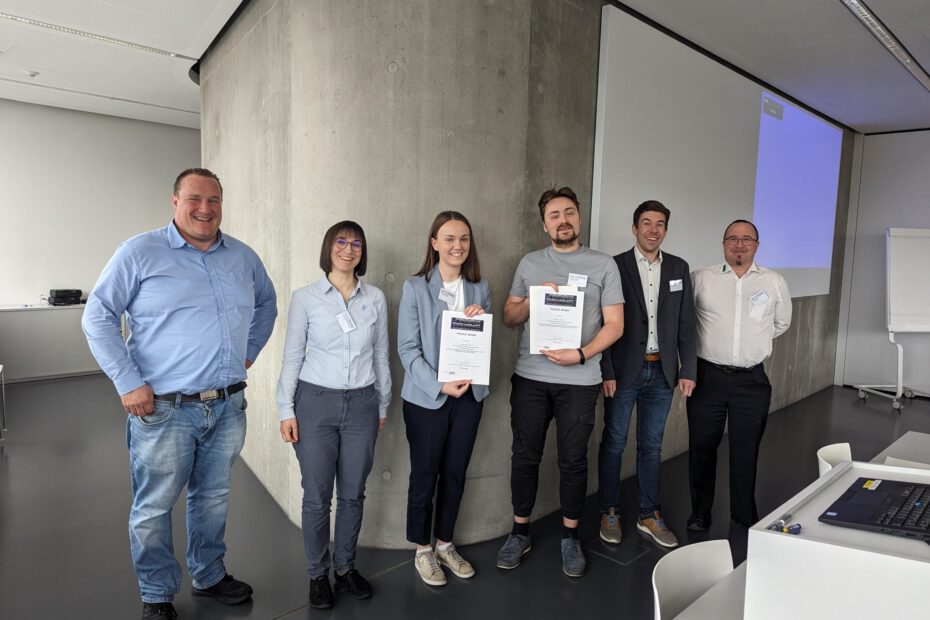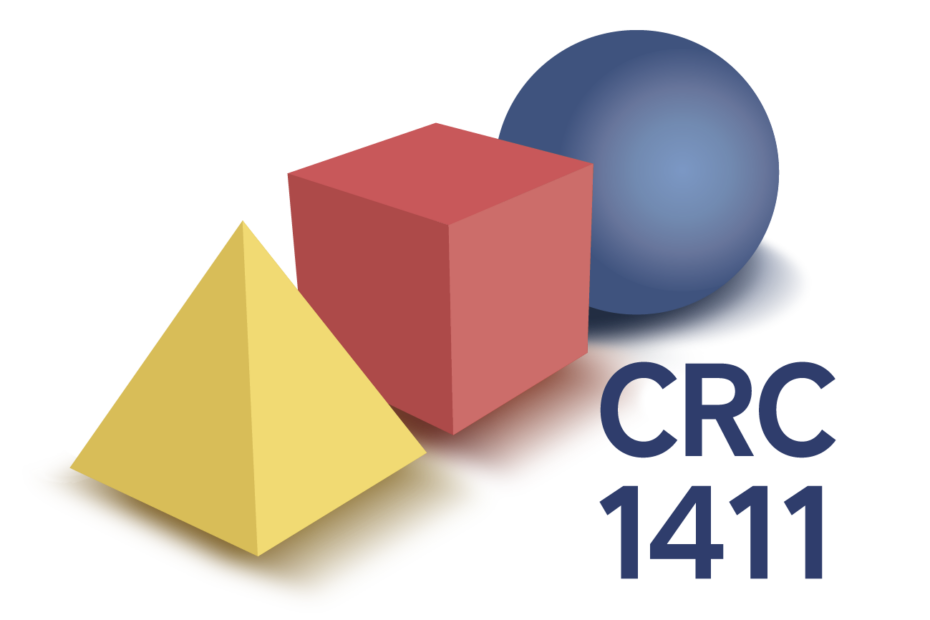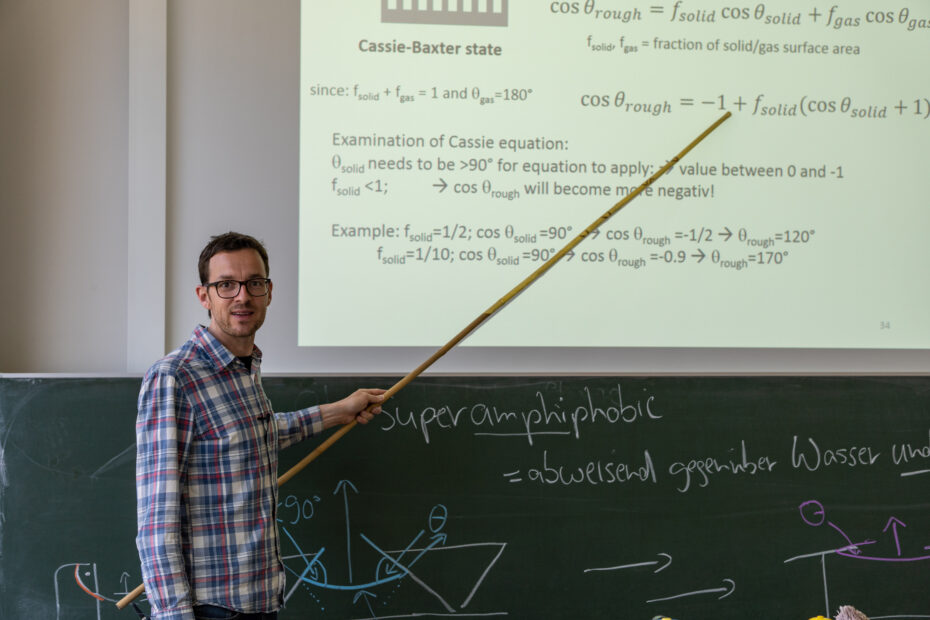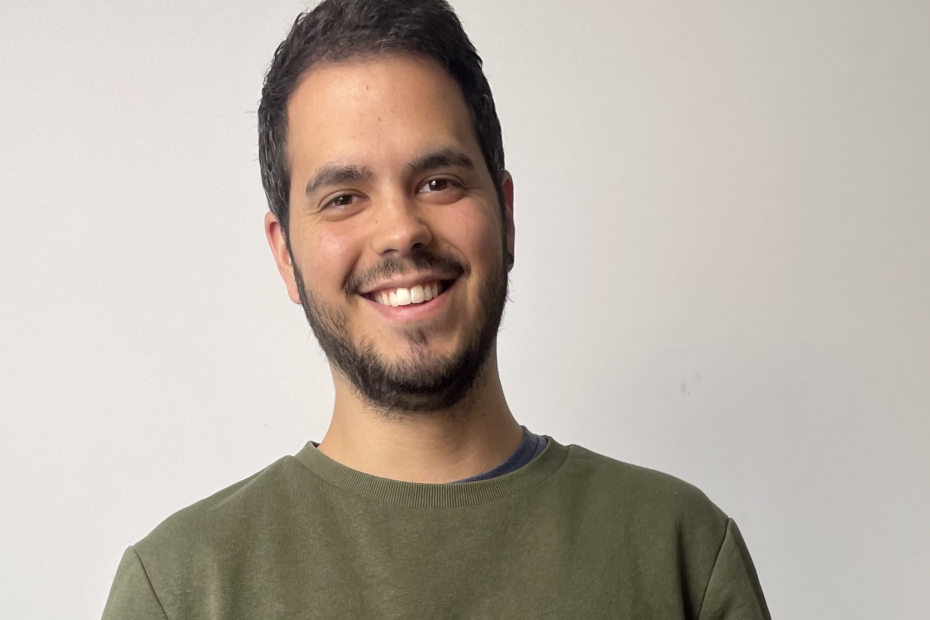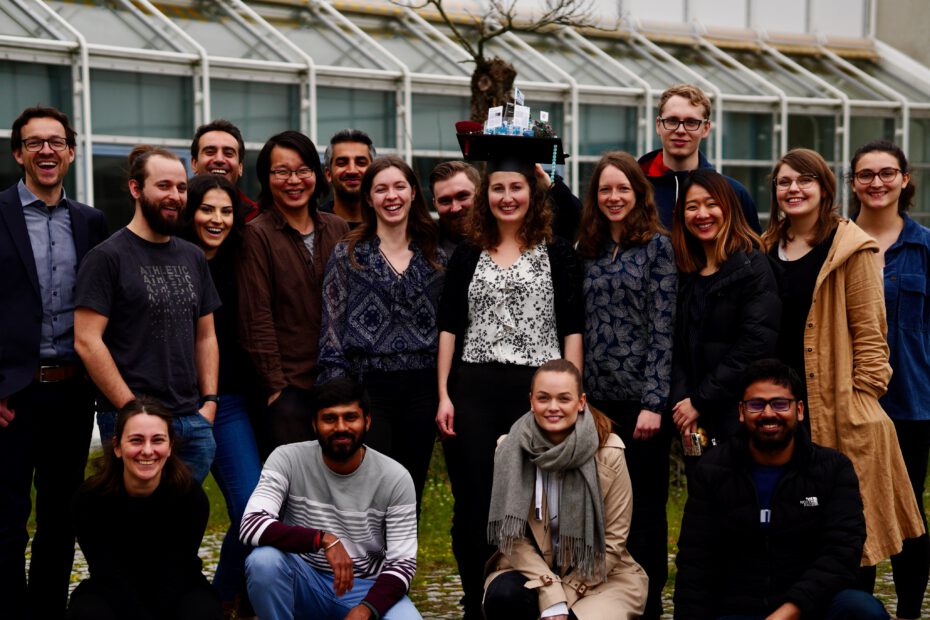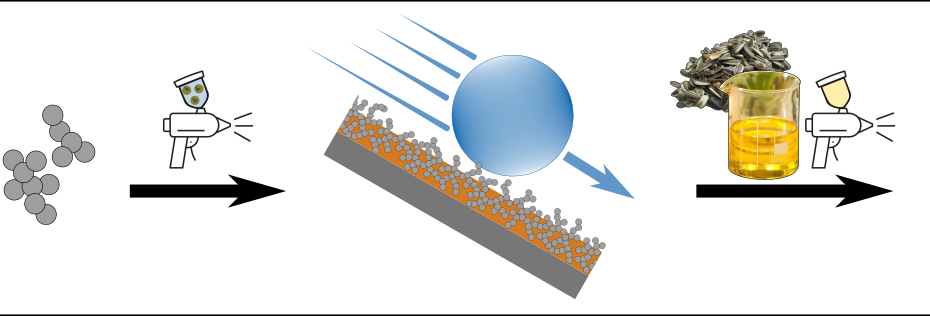At the 2025 Zsigmondy Colloquium in Freiberg, participants marked the 100th anniversary of Richard Zsigmondy’s Nobel Prize in Chemistry. Following a series of outstanding presentations and fruitful exchanges, our institute had additional reasons to celebrate: Jonathan Martín-González was honoured with the Best Poster Award, and Dr. Nabi E. Traoré received the Best Talk Award.
Congratulations to Daniel Platzer for achieving outstanding results in the FAU Faculty of Engineering’s student teaching evaluations for the summer semester 2025!His exercise course “Grenzflächen in der Verfahrenstechnik” received first place (Rank 1 / 33) in the evaluation category ÜP5. This excellent performance reflects Daniel’s strong commitment to teaching and his talent for creating an engaging learning environment where complex concepts in interfacial engineering become clear and accessible.
We are delighted to share that Niki received top rankings in the FAU Faculty of Engineering’s student teaching evaluations for his courses in the summer semester 2025. His lectures “Grenzflächen in der Verfahrenstechnik” and “Polymer Science and Processing” were each awarded first place in their respective evaluation categories (VP10 and VW10), ranking 1st out of 32 and 1st out of 42 evaluated courses. These results highlight the consistently high quality of teaching and the enthusiasm Prof. Vogel brings to the classroom. His ability to make complex topics in materials science and process engineering both engaging and accessible is highly appreciated by students.
We teamed up with the renowned magazine GEO to co-author an article on structural colors in animals. The piece, published on GEO.de, explores the fascinating mechanisms behind the vibrant and shimmering colors found in nature. Unlike pigment-based colors, structural colors arise from microscopic surface structures that manipulate light through reflection and interference. This phenomenon creates the brilliant, iridescent hues seen in butterfly wings, peacock feathers, and beetle shells. Niki contributed scientific insights to the article, explaining how nanostructures interact with light to produce these striking effects. The article also features… Read More »Our research on GEO Magazine
Congratulations to our mini project students on this great achievement! On January 22nd they were awarded the best poster prizes for presenting the research carried out in our lab to peers and faculty members. Pranjal was also awarded the best student prize for his academic achievement as well as for his dedication to helping his colleagues.
We are excited to share that our PhD student, Natalie Bonakdar, has won the Second Poster Prize at the Particle-based Materials Symposium in Bremen on September 24, 2024 for her poster “Optimizing Wetting Properties of Silica Inverse Opal Structures by Controlling Templating Nanoparticle Properties”. We are excited to see how her research progresses and look forward to her future results. Congratulations to Natalie on this well-deserved achievement!
Niki ranked respectively first and second with his lectures Basics in Nanomaterials and Nanotechnology 1 – Mechanical and Optical Properties and Grenzflächen in der Biotechnologie in the winter semester 23/24 and in the summer semester 24. We are very happy to see that our lectures are very well received by students!
Carina’s and Gudrun’s recent article has been featured on the cover of Advanced Materials Interfaces! In this paper, we demonstrate how to enhance optical effects by integrating Polydopamine (PDA), a synthetic melanin, into photonic crystals. PDA is incorporated in two ways: by gradually increasing PDA shells in core-shell particles while maintaining a constant total diameter to create homogeneous crystals, and by co-assembling varying ratios of polystyrene (PS) and absorbing PS@PDA particles for heterogeneous crystals. Chromaticity analysis in the L*a*b* color sphere reveals structures with optimal color saturation. Simulations suggest that… Read More »Carina’s and Gudrun’s recent article has been featured on the cover of Advanced Materials Interfaces!
On April 15th Niki, assisted by early-career researcher Rebekka, presented how structural color works at the science slam »Um uns die Nature« jointly organized by the Senckenberg Gesellschaft für Naturforschung and the Frankfurter Museums-Gesellschaft e.V. at the Opera house in Frankfurt and was awarded the second Prize for his presentation!
Our Bachelor Student Sonja Schaller was awarded the first prize for her poster “Determining the Organization of Binary Colloidal Supraparticles by matters of Diffusiophoresis and Channel Formation” at the Spray Drying Symposium taking place in Würzburg on 09.04.2024. We are very proud of her achievement and looking forward to her successful thesis research outcome!
The German Research Foundation just announced that CRC1411 will receive funding until 2028 with Niki as a spokesperson. The long-term vision of CRC1411 is to develop particle systems with controlled size, shape and composition. The innovative approach in CRC1411 is is that these materials are first developed and optimized for specific product properties in computer models. In the second step, the computer then predicts optimal synthesis conditions that lead to particles with these desired properties. This approach reverses typical manufacturing processes and promises fast and resource-efficient access to functional particle-based… Read More »Collaborative Research Center CRC 1411 will be funded for another 4 years
Niki’s lecture “Grenzflächen in der Verfahrenstechnik” was again on the podium as one of the best rated lectures in the whole Technical Faculty! In this class Niki discusses interfaces in materials and process technologies, with plenty of examples from nature and technology. Read more about the class here.
Two CRC1411-related lectures taught by Prof. Nicolas Vogel were included in the “Bestenlisten”, with “Polymer Materials” ranking 2nd, and “Grenzflächen in der Biotechnologie” ranking 3rd in the whole TeckFac. These awards show how the results of the CRC1411 and LFG research contribute to the success of our teaching.
Catalysts are of utmost relevance for the production of chemicals and energy storage with hydrogen. Researchers at the Helmholtz Institute Erlangen-Nürnberg for Renewable Energy (HI ERN) and Friedrich-Alexander-Universität Erlangen-Nürnberg (FAU) have now discovered that the formation of bubbles in the pores of a catalyst can be essential for its activity. Their findings help to optimize catalyst materials for reactions in which gases are formed from liquids – and which play a central role in a future green hydrogen economy. Read more
